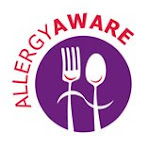IBS IN CHILDREN
WIDODO JUDARWANTO MD,
CHILDREN ALLERGY CENTER JAKARTA INDONESIA
Irritable bowel syndrome (IBS) is a digestive disorder that causes abdominal pain, bloating, gas, diarrhea, and constipation--or some combination of these problems. IBS affects people of all ages, including children.
IBS is classified as a functional disorder because it is caused by a problem in how the intestines, or bowels, work. People with IBS tend to have overly sensitive intestines that have muscle spasms in response to food, gas, and sometimes stress. These spasms may cause pain, diarrhea, and constipation.
In children, IBS tends to be either diarrhea-predominant or pain-predominant. Diarrhea-predominant IBS is most common in children under age 3. The diarrhea is usually painless and alternates with bouts of constipation. These children usually have fewer than five stools a day, and the stools tend to be watery and soft. Pain-predominant IBS mainly affects children over age 5. In the younger children the pain tends to occur around the navel area, and in older children, in the lower left part of the abdomen. The pain is crampy and gets worse with eating and better after passing stool or gas.
In addition to the symptoms described above, children with IBS may also have headache, nausea, or mucus in the stool. Weight loss may occur if a child eats less to try to avoid pain. Some children first develop symptoms after a stressful event, such as teething, a bout with the flu, school problems, or problems at home. Stress does not cause IBS, but it can trigger symptoms.
To diagnose IBS, the doctor will ask questions about symptoms and examine the child to rule out the possibility of more serious problems or diseases. IBS is not a disease -- it is a syndrome, or group of symptoms that occur together. It does not damage the intestine, so if the physical exam and other tests show no sign of disease or damage, the doctor may diagnose IBS.
A population based study1 of 507 middle school and high school students indicates that 6-14% of the adolescent population note symptoms consistent with IBS. In the study, anxiety and depression scores were significantly higher for students with IBS-type symptoms compared with those without symptoms. Eight percent of all students had seen a physician for abdominal pain in the previous year. These visits were correlated with abdominal pain severity, frequency, duration, and disruption of normal activities; they were not correlated with anxiety, depression, gender, family structure, or ethnicity.
IBS is the second most frequently encountered diagnosis in clinical practice.2 According to the International Foundation for Functional Gastrointestinal Disorders (IFFGD), IBS affects 10% to 20% of adults and a similar percentage of children. Symptoms sufficient for a diagnosis of IBS in children were noted in 17% of high school students and 8% of middle school students.3
The NIH states that IBS may be a cause of recurring abdominal pain in children. The diagnosis of IBS is based on having abdominal pain or discomfort plus any two of the following:
The pain is relieved by having a bowel movement
The onset of pain is associated with a change in the frequency of stools
The onset of pain is associated with a change in stool consistency
the symptoms. The NIH also states that in children and adolescents, IBS affects girls and boys equally and may be diarrhea-predominant, constipation-predominant, or have a variable stool pattern.
Children with IBS may also have headache, nausea, or mucus in the stool. Weight loss may occur if a child eats less to try to avoid pain. Some children first develop symptoms after a stressful event, such as teething, a bout with the flu, or problems at school or at home. Stress does not cause IBS, but it can trigger symptoms.
In children, IBS is treated mainly through changes in diet -- eating more fiber and less fat to help prevent spasms -- and through bowel training to teach the child to empty the bowels at regular, specific times during the day. Medications like laxatives are rarely prescribed because children are more susceptible to addiction than adults. When laxatives are necessary, parents must follow the doctor's instructions carefully. Learning stress management techniques may help some children.
REFERENCE
· Hyams, JS, Burke, G, Davis, PM, Rzepski, B, Andrulonis, PA. Abdominal pain and irritable bowel syndrome in adolescents: a community-based study. J Pediatr 1996 Aug;129(2): 220-6
· Engstrom, PF, Goosenberg, EB. Diagnosis and Management of Bowel Diseases, First Edition, 1999; 2: 64.
· Hyams, JS, Burke, G, Davis, PM, Rzepski, B, Andrulonis, PA. Abdominal pain and irritable bowel syndrome in adolescents: a community-based study. J Pediatr 1996 Aug;129(2): 220-6











No comments:
Post a Comment